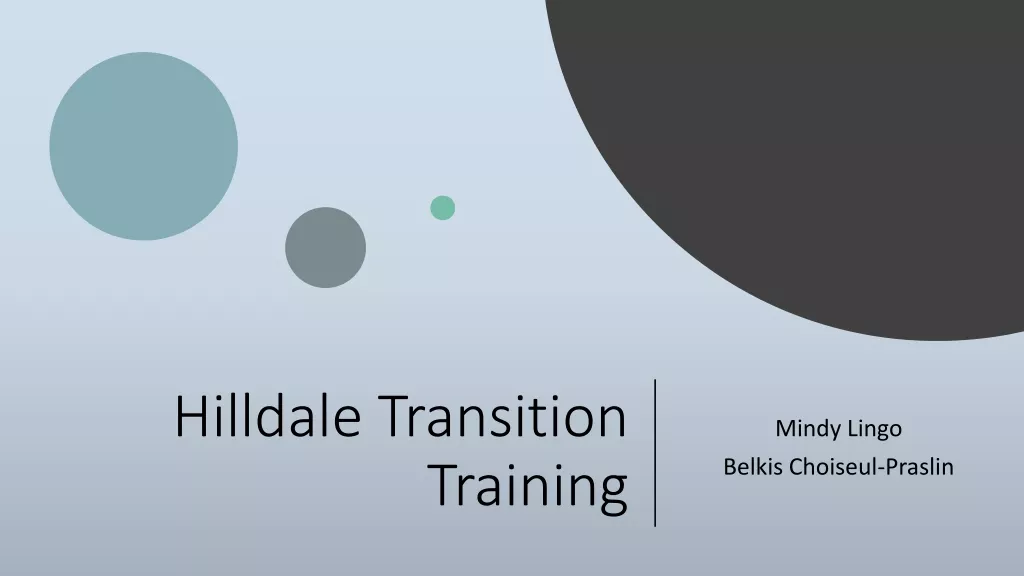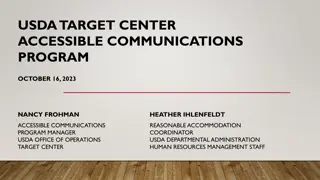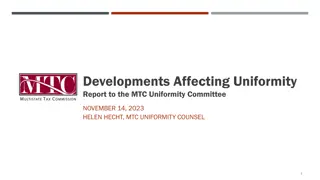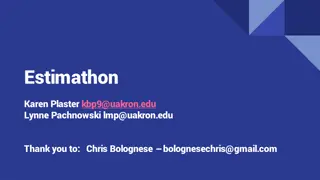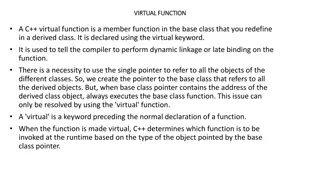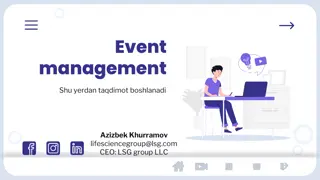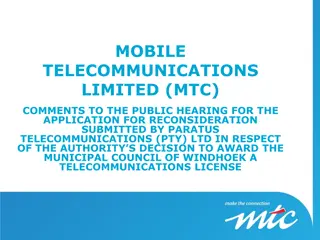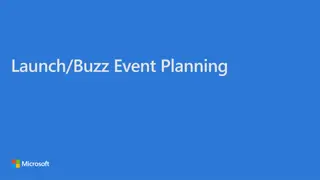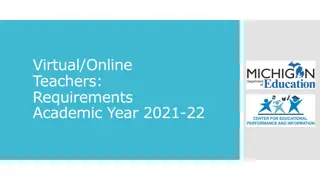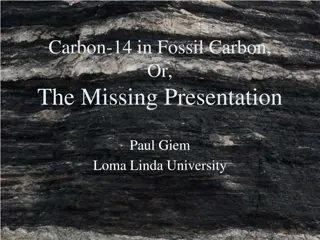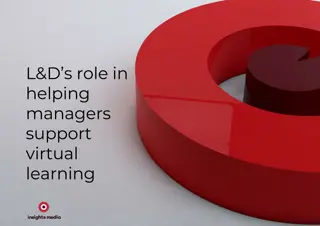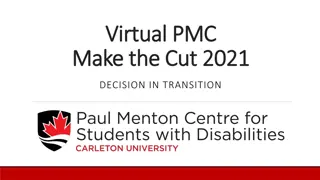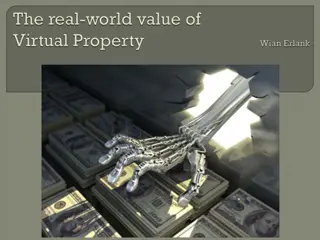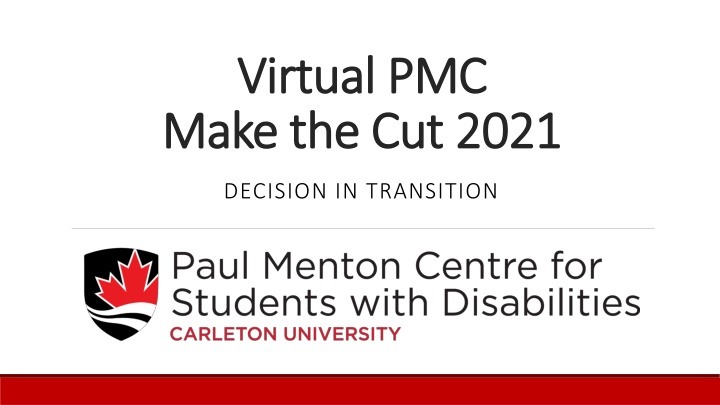
Navigating the Transition from High School to Post-Secondary Education
Discover the key differences between high school and post-secondary education, including legal frameworks, accommodation processes, and documentation requirements. Learn how to plan your transition effectively and access essential support services. Explore valuable insights on labor market trends, strengths, interests, and weaknesses to make informed decisions for your future.
Download Presentation

Please find below an Image/Link to download the presentation.
The content on the website is provided AS IS for your information and personal use only. It may not be sold, licensed, or shared on other websites without obtaining consent from the author. If you encounter any issues during the download, it is possible that the publisher has removed the file from their server.
You are allowed to download the files provided on this website for personal or commercial use, subject to the condition that they are used lawfully. All files are the property of their respective owners.
The content on the website is provided AS IS for your information and personal use only. It may not be sold, licensed, or shared on other websites without obtaining consent from the author.
E N D
Presentation Transcript
Virtual PMC Virtual PMC Make the Cut 2021 Make the Cut 2021 DECISION IN TRANSITION
Session #1: Session #1: Plan Plan Your Transition Your Transition SONIA TANGUAY SONIA TANGUAY SENIOR DISABILITIES COORDINATOR Virtual PMC Make the Cut 2021
Overview Overview Plan your transition Accommodation process Documentation requirements Accommodations and support services Planning ahead Differences between high school and university Q&A Virtual PMC Make the Cut 2021
Audience Poll: "What words come to mind when you think Audience Poll: "What words come to mind when you think about planning your transition to post about planning your transition to post- -secondary? secondary?
Audience Poll Results: "What words come to mind when you Audience Poll Results: "What words come to mind when you think about planning your transition to post think about planning your transition to post- -secondary? secondary?
Plan Your Transition (PYT) Labour Market Trends Strengths PYT Interests Aptitudes Co-op Programs / Experiential Learning Weaknesses
Differences between High School Differences between High School and Post Secondary: and Post Secondary: Legal Framework and Accommodation Process Legal Framework and Accommodation Process Access to education for students with disabilities is regulated by: High School: Education Act. Post-Secondary: Ontario Human Rights Code (OHRC) and Accessibility for Ontarians with Disabilities Act (AODA). To show that a student has a disability, they must: High School: Have an IEP that is based on a formal diagnosis or an informal identification (no exceptionality). Post-Secondary: Have recent documentation completed by a regulated health professional that confirms functional limitations and a diagnosis. Virtual PMC Make the Cut 2021
Differences between High School Differences between High School and Post Secondary: and Post Secondary: Accommodation Process Accommodation Process (1 of 2) (1 of 2) The decision to disclose your disability to your teachers and professors is made by: High School: The parent or guardian (until you are 18). Post-Secondary: You, the student. To decide which accommodations students need: High School: Teachers can recommend various accommodations to students (often all students with learning difficulties have access to the same accommodations). Post-Secondary: Disability Coordinators/Advisors will review your documentation and only choose specific accommodations that meet your learning profile and functional limitations and consider essential course requirements. Virtual PMC Make the Cut 2021
Differences between High School Differences between High School and Post Secondary : and Post Secondary : Accommodation Process Accommodation Process (2 of 2) (2 of 2) Who informs teachers of your accommodation needs: High School: The special education teacher provides each classroom teacher with IEPs for all their students. Post-Secondary: The student must request accommodations every term and follow up with professors to make sure accommodation arrangements are made. Virtual PMC Make the Cut 2021
Documentation Requirements Documentation Requirements I have an Individual Education Plan (IEP). Can I use my IEP as documentation? To access permanent accommodations in post-secondary education, an IEP is not sufficient documentation. Most universities require an assessment of functional limitations to determine how your disability impacts you in the learning environment. Documentation must be completed by a qualified regulated health professional (e.g. medical doctor, audiologist, psychologist). Documentation Forms The Paul Menton Centre (PMC) has developed specific documentation forms for various types of disabilities. Visit DSO websites for information about documentation requirements or schedule an information meeting to review your documentation prior to the start of the academic year. Virtual PMC Make the Cut 2021
Academic Accommodations Academic Accommodations and Student Support Services and Student Support Services (1 of 2) (1 of 2) To provide equal opportunity to meet essential course requirements, success is not guaranteed. Individualized according to disability-related needs. Student s active engagement in the accommodation process. Accommodations are usually formalized in a document issued by the disability service office to your professors. Virtual PMC Make the Cut 2021
Academic Accommodations Academic Accommodations and Student Support Services and Student Support Services (2 of 2) (2 of 2) Test/exam accommodations Extra time Quiet location Computer Assistive software (reading, voice recognition, screen reading software) Classroom accommodations Audio record lectures ASL interpreters Captioning, computerized note-taking Virtual PMC Make the Cut 2021
Student Support Services Student Support Services Supplemental notes provided by a volunteer peer notetaker Individualized learning strategies Peer mentoring & transition support Disability counselling Assistive/learning technology labs Assistive technology training Tutoring Employment programs in partnership with career services Virtual PMC Make the Cut 2021
Planning Ahead: Before, During and After Planning Ahead: Before, During and After Before Spring-Summer Gather your documentation and review documentation requirements. Schedule an information meeting or an intake appointment with a DSO advisor/coordinator. Attend open house events or summer transition programs. Consider housing arrangements, financial support and how to budget costs/expenses. During Fall Request accommodations for the fall term. Understand the accommodation process. Discuss your accommodation needs with your professors. Stay in contact with your disability advisor/coordinator. After Fall-Winter Assess and monitor your academic progress and well-being. Participate in skill development opportunities to improve coping and academic skills. Stay engaged and connect with others. Virtual PMC Make the Cut 2021
Self Self- -advocacy advocacy - - Meaning What does it mean? Understand your disability and learning profile. Express your needs in a way that promotes open communication. Understand your responsibility in the accommodation process. Explain how an accommodation will address a disability-related need. Ask for help. Meaning Virtual PMC Make the Cut 2021
Self Self- -advocacy Tips advocacy Tips Tips for being a good self-advocate: Write down your points beforehand and practice. Focus on your goal. Be specific. Say what action you think should be taken. Propose solutions when a problem comes up. Ask questions. Virtual PMC Make the Cut 2021
Differences between High School and University Time / Schedule Academics Teacher / Student Relationship Resources / Academic Advising

